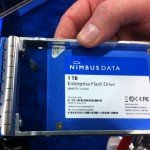FlashGrid is a new company founded in 2015 by some industry veterans (coming from Veritas, Intel, EMC, HGST, VMware, IBM).
FlashGrid is a software-defined storage technology company specializing on solutions for high availability high performance databases both on-prem or also on public cloud (for more information about their solution see also FlashGrid – Hyper-converged storage solution for Oracle systems).
For public cloud their promise to tun high availability and extreme performance database (Oracle) services.
For the high availability aspect they provide an automated cluster provisioning tool for AWS and an AMI for it based on Oracle Linux 7.3. It takes only 10 minutes to get a new cluster running and ready for Grid Infrastructure installation. There is also a specific white paper (Mission-Critical Databases in the Cloud: Oracle RAC on Amazon EC2 Enabled by FlashGrid® Software).
Availability is across different AWS availability zones, so it’s really an interesting solution from this point of view:
On the performance side, they has released results of series of storage performance tests for a clustered database running in public cloud. The goal of the tests was to show the possibility of attaining bare-metal performance for an enterprise-grade database running on public cloud resources.
The tests were conducted on Oracle Bare Metal Cloud Services running Oracle Real Application Clusters (RAC) with three hyper-converged nodes. Each node was running on a DenseIO.36 instance with nine 3.2TB NVMe SSDs. The software stack was Oracle Linux 7 with Oracle Grid Infrastructure 12.1 and Oracle Database 12.1. FlashGrid Storage Fabric software with FlashGrid Read-Local Technology established the sharing of locally attached SSDs and FlashGrid Cloud Area Network software enabled the necessary cluster interconnect. Each database node was configured in a separate availability domain for maximum availability.
Calibrate_IO tests results were 6.4 million IOPS and 55Gb/s with latency below 1ms. SLOB test produced 537,000 IOPS for physical reads, and 120,000 IOPS for writes to deliver 657,000 IOPS combined. The latter figure is several times faster than typical performance in a traditional architecture with an all-flash SAN.
This can demostrate how it’s possible now running critical workload on public cloud, but also have high availability. Of course bare metal cloud services are just a specific vertical subset of IaaS services, but the interesting part of those test is the availability cross zones. In the future, could be interesting see if is possible reach interesting performance results also with traditional IaaS.




